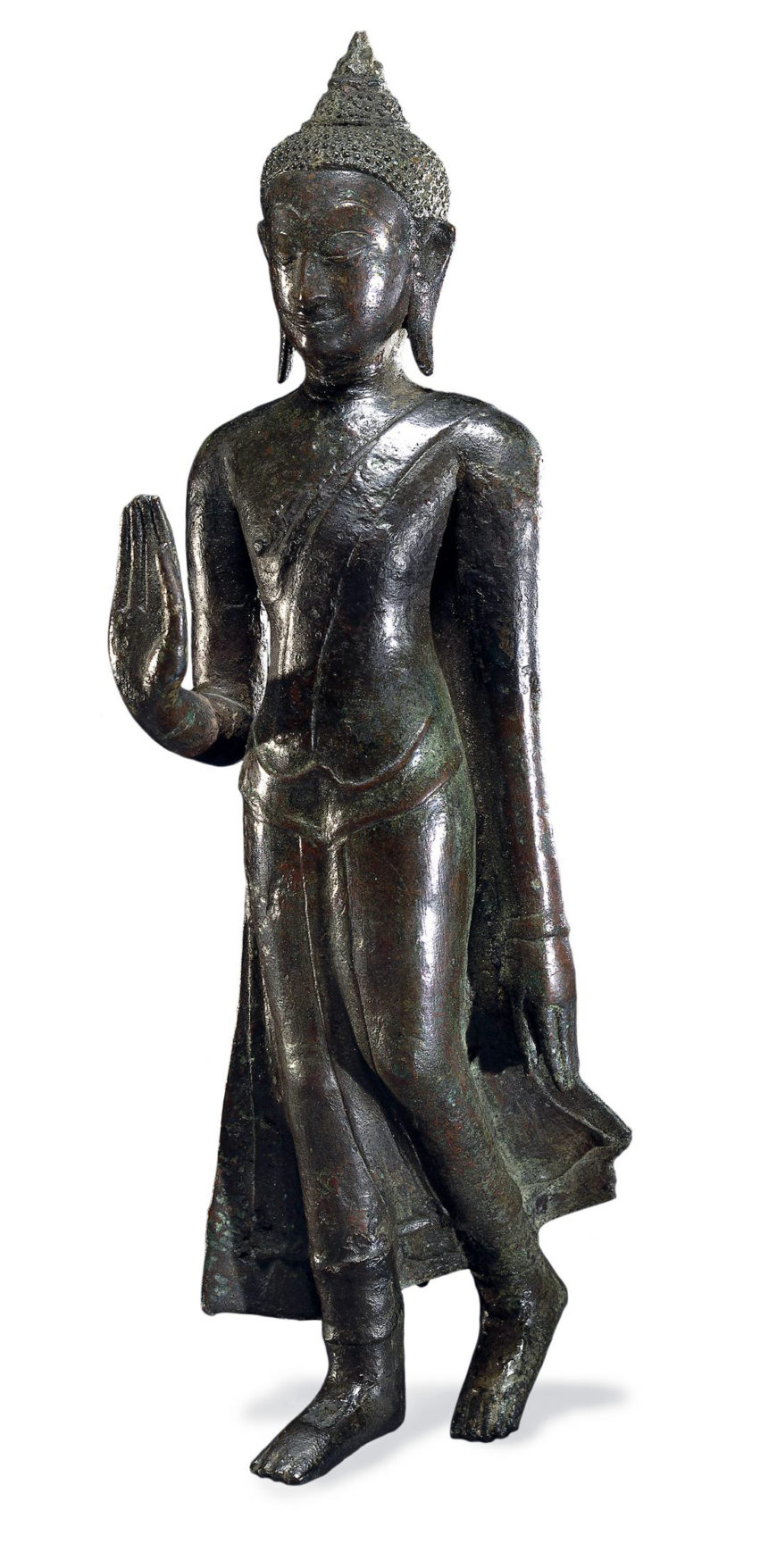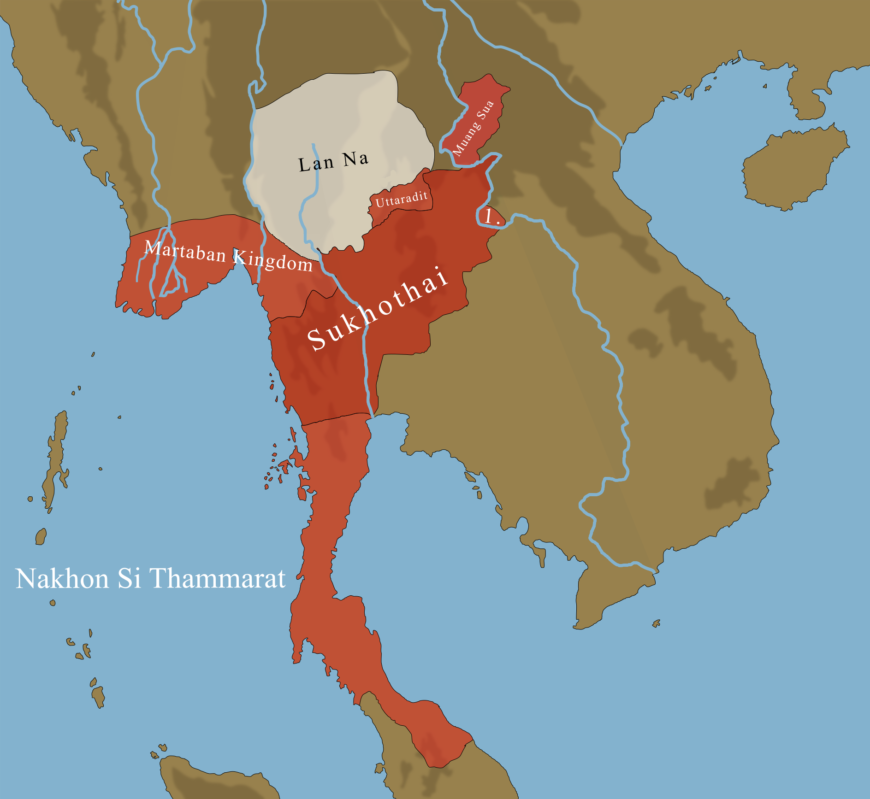
Bronze figure of the walking Buddha, Thailand, Sukothai period, 14th century, bronze, 28 cm high (© Trustees of the British Museum)
Bronze sculpture from the Thai ‘Golden Age’
This Buddha is depicted walking with his right hand in the gesture of reassurance (abhayamudra). Most Buddha images throughout Asia are in one of three postures: standing, sitting or lying down. The creation of a walking Buddha image is a distinctive feature of Thai art in the thirteenth century. Walking images of the Buddha continue to be made in Thailand to this day.
Walking among the people
After renouncing his early life as a prince, the Buddha spent the remainder of his life as a mendicant, teaching throughout northern India. Earlier Buddhist art had stressed the god-like and king-like aspects of the Buddha, and neither gods nor kings were imagined as a walking monk. Thai images presented a new image of the Buddha walking among the people emphasizing his earthly aspects. Sukhothai walking images are also connected with the conception of Thai kings as being closer to the people than their Indian or Khmer counterparts.
The Sukhothai kingdom was the first Theravada Buddhist kingdom of Thailand. The ethnic Thai people entered modern Thailand from the north, modern south-west China. The Sukhothai style of sculpture is very distinctive, with smooth long limbs, an oval face and smooth modeling of clothing. The influence of Sri Lanka is clear in the flame-like ushnisha which is seen on the head of images of the Buddha.
© Trustees of the British Museum


